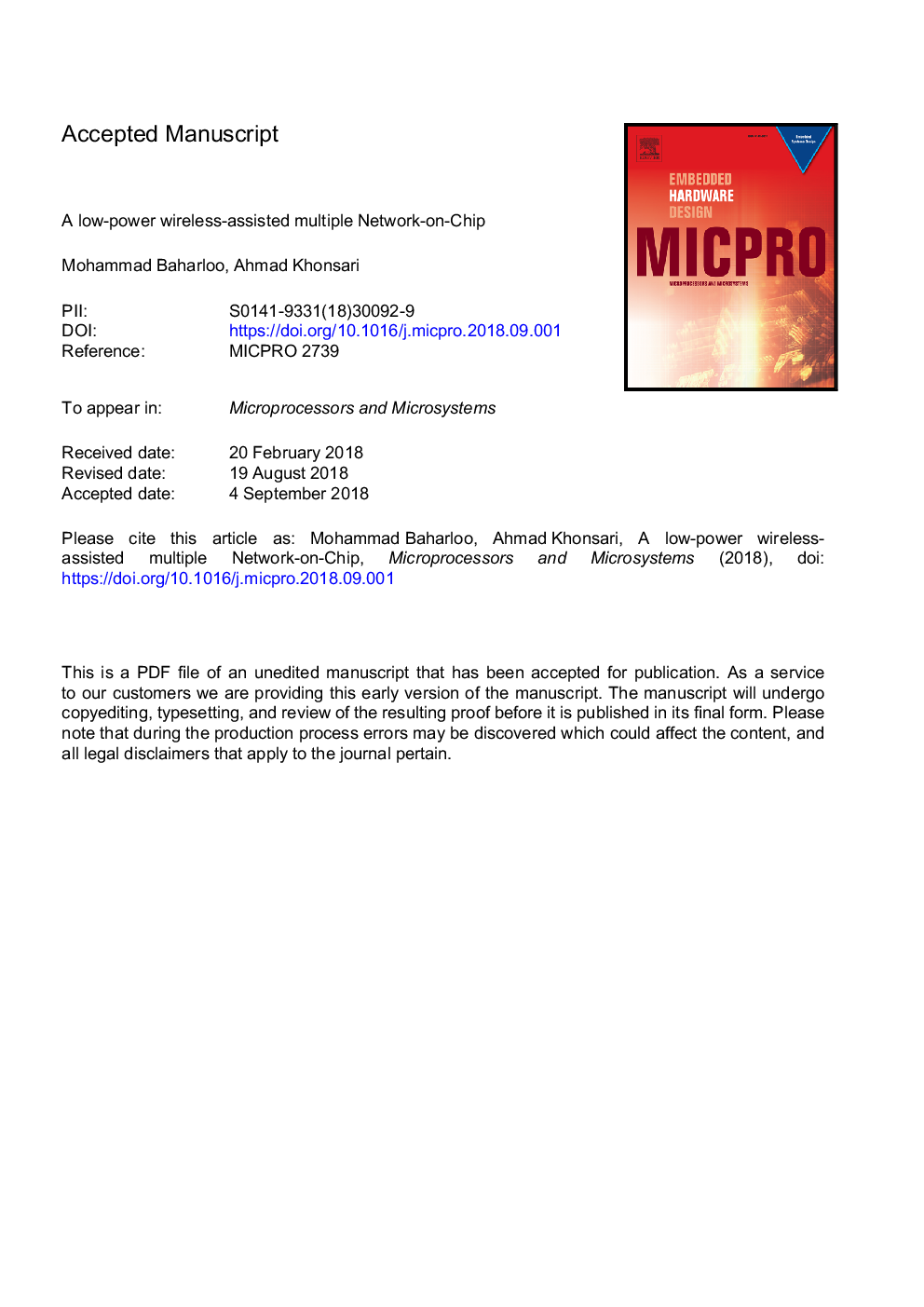| Article ID | Journal | Published Year | Pages | File Type |
|---|---|---|---|---|
| 10127138 | Microprocessors and Microsystems | 2018 | 39 Pages |
Abstract
Multiple network-on-chip (Multi-NoC) architectures are supposed to distribute the network traffic categorically among disjoint sub-networks. The main objective is significant energy reduction through power-gating of unused sub-networks. However, the packets are delayed due to sleep/wake cycles, which directly influences the overall performance of the system. In addition, the communication infrastructure of the Multi-NoC should be selected carefully to avoid performance degradation. Our solution to address these issues is using wireless links, which is used to relax the timing restrictions on sleep/wake cycles to save more power without losing performance. To realize wireless communications, we adopt two types of on-chip wireless technology that operate at different frequency bands, namely terahertz (THz) and millimeter-wave (mmW). To evaluate the merits of the proposed architecture that employs these wireless technologies, we used both real application benchmarks (PARSEC and SPLASH-2) and synthetic traffics on a many-core processor. For THz technology, the proposed architecture results in nearly 51% and 10% power reduction compared to traditional single network-on-chip (Single-NoC) and a power-gated 4-subnets Multi-NoC, respectively. The corresponding results for mmW technology show 46% and 6% power reduction. Also, the proposed architecture for THz and mmW technologies results in 10% and 7% latency reduction compared to Multi-NoC, respectively. The performance metrics of the proposed architecture is comparable to Single-NoC architecture, which demonstrates the effectiveness of our proposal.
Related Topics
Physical Sciences and Engineering
Computer Science
Computer Networks and Communications
Authors
Mohammad Baharloo, Ahmad Khonsari,
